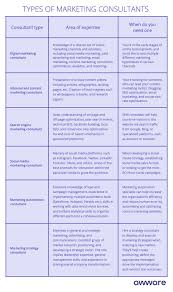The Power of Digital Branding
In today’s digital age, establishing a strong brand presence online is essential for businesses looking to stand out in a crowded marketplace. Digital branding goes beyond just having a website or social media profiles – it encompasses the entire online experience that a company offers to its customers.
One of the key aspects of digital branding is consistency. From the design elements to the tone of voice used in communication, maintaining a consistent brand image across all digital platforms helps build trust and recognition among consumers. This consistency reinforces the brand’s values and messaging, making it easier for customers to connect with and remember the brand.
Another important aspect of digital branding is storytelling. Through compelling storytelling, companies can create an emotional connection with their target audience, making their brand more relatable and engaging. By sharing authentic stories that resonate with consumers, businesses can humanise their brand and differentiate themselves from competitors.
Furthermore, digital branding allows companies to engage with their audience in real-time. Social media platforms provide a direct line of communication between brands and consumers, enabling businesses to receive feedback, address customer concerns, and build relationships with their audience. This interactive approach not only enhances customer loyalty but also helps in shaping the brand’s reputation online.
Moreover, digital branding offers businesses the opportunity to reach a global audience. With the power of the internet, companies can expand their reach beyond geographical boundaries and connect with potential customers worldwide. By leveraging digital marketing strategies such as SEO, content marketing, and paid advertising, brands can increase their visibility and attract new customers from different parts of the world.
In conclusion, digital branding plays a crucial role in shaping how consumers perceive and interact with a brand online. By focusing on consistency, storytelling, engagement, and global reach, businesses can create a powerful digital presence that resonates with their target audience and drives success in today’s competitive landscape.
Six Advantages of Digital Branding: Enhancing Visibility, Engagement, and Loyalty
- Increased brand visibility and reach on a global scale.
- Cost-effective compared to traditional marketing methods.
- Enhanced customer engagement through interactive digital platforms.
- Ability to target specific demographics and measure campaign effectiveness.
- Opportunity to build brand loyalty and trust through consistent online presence.
- Facilitates real-time communication with customers for feedback and relationship-building.
Navigating the Challenges of Digital Branding: Over-saturation, Lack of Control, and Rapid Changes
Increased brand visibility and reach on a global scale.
One of the key advantages of digital branding is the significant increase in brand visibility and reach on a global scale. By establishing a strong online presence through various digital platforms and marketing strategies, businesses can transcend geographical boundaries and connect with a diverse audience worldwide. This expanded reach not only enhances brand awareness but also opens up new opportunities for growth and customer acquisition in international markets. Digital branding enables companies to amplify their message to a global audience, ultimately driving increased engagement, loyalty, and success on a global scale.
Cost-effective compared to traditional marketing methods.
One significant advantage of digital branding is its cost-effectiveness when compared to traditional marketing methods. By leveraging digital channels such as social media, email marketing, and online advertising, businesses can reach a large audience at a fraction of the cost associated with traditional advertising mediums like print or television. This affordability allows companies to allocate their marketing budget more efficiently, targeting specific demographics and measuring the effectiveness of their campaigns in real-time. Ultimately, digital branding offers a cost-effective solution for businesses looking to maximise their marketing efforts while minimising expenses.
Enhanced customer engagement through interactive digital platforms.
Enhanced customer engagement through interactive digital platforms is a significant benefit of digital branding. By leveraging tools such as social media, live chat, and interactive content, businesses can create meaningful interactions with their audience in real-time. This direct engagement not only fosters a sense of connection and trust but also allows companies to gather valuable feedback, address customer concerns promptly, and tailor their offerings to meet the needs and preferences of their target market. Ultimately, interactive digital platforms enable businesses to build stronger relationships with their customers, leading to increased brand loyalty and long-term success.
Ability to target specific demographics and measure campaign effectiveness.
Digital branding offers businesses the invaluable advantage of precisely targeting specific demographics and meticulously measuring the effectiveness of their campaigns. By leveraging data analytics and digital marketing tools, companies can tailor their branding efforts to reach the exact audience segments that are most likely to engage with their brand. This targeted approach not only maximises the impact of marketing initiatives but also enables businesses to track and analyse key performance metrics in real-time, allowing for quick adjustments and optimisations to enhance campaign effectiveness. The ability to target specific demographics and measure campaign effectiveness empowers brands to make data-driven decisions that yield tangible results and drive long-term success in the digital realm.
Opportunity to build brand loyalty and trust through consistent online presence.
One significant advantage of digital branding is the opportunity it provides for businesses to cultivate brand loyalty and trust by maintaining a consistent online presence. By ensuring that all digital touchpoints reflect the brand’s values, messaging, and visual identity, companies can establish a strong connection with their audience. Consistency in online communication and engagement helps build familiarity and reliability, ultimately fostering trust among customers. This trust and loyalty are crucial in retaining existing customers, attracting new ones, and differentiating the brand in a competitive market landscape.
Facilitates real-time communication with customers for feedback and relationship-building.
Digital branding offers businesses the invaluable advantage of facilitating real-time communication with customers, enabling them to receive immediate feedback and build strong relationships. By leveraging digital platforms such as social media, companies can engage with their audience in a timely manner, address concerns promptly, and create meaningful interactions that foster trust and loyalty. This direct line of communication not only allows businesses to gather valuable insights from their customers but also provides an opportunity to demonstrate responsiveness and dedication to customer satisfaction, ultimately enhancing the brand’s reputation and fostering long-lasting relationships with its audience.
1. Over-saturation
In the realm of digital branding, one significant con that businesses face is the issue of over-saturation. With a multitude of brands competing for visibility and engagement online, the sheer volume of content can lead to a saturation point where it becomes increasingly difficult for a brand to differentiate itself and capture the audience’s interest. This over-saturation can dilute a brand’s message, making it challenging to break through the noise and establish a meaningful connection with consumers in a crowded digital landscape.
2. Lack of control
In the realm of digital branding, one significant drawback is the lack of control over user-generated content and online reviews. While these channels provide valuable opportunities for customers to share their opinions and experiences, they also pose a risk of negative feedback that can potentially harm a brand’s reputation. With limited control over such content, businesses may find themselves vulnerable to damaging comments and criticisms that could impact how their brand is perceived by the public. This lack of control underscores the importance of actively monitoring online conversations and addressing any negative feedback in a timely and strategic manner to mitigate potential reputational risks.
3. Rapid changes
One significant drawback of digital branding is the rapid pace of change within the digital landscape. With new technologies and trends emerging at a swift pace, businesses face the challenge of keeping up with these developments to remain competitive and relevant online. Adapting to these changes demands constant vigilance and a willingness to evolve strategies quickly, which can be demanding and time-consuming for brands seeking to maintain a strong digital presence. The need for continuous adaptation in response to the ever-evolving digital environment poses a significant con for businesses looking to establish a consistent and effective online brand identity.



